- Do + See
- Dine + Host
- Give + Join
- Educate + Learn
5 Ensembles You Won't Want to Miss in Sporting Fashion
Highlights from Sporting Fashion: Outdoor Girls 1800 to 1960
-
Ice skating ensemble, 1810s, Photo: Brian Davis, © FIDM Museum, Courtesy American Federation of Arts
Frigid temperatures did not impede adventuresome women in ice skating. Slipping and falling or even breaking through the ice was a concern, and it was recommended by the Dictionary of Arts and Sciences in 1809 that “those who wish to be proficient, should begin at an early period of life, and should first endeavor to throw off fear which always attends the commencement of an apparently hazardous amusement.”
This high-necked pelisse—a fully enveloping coat closed at the bosom—is outlined with rabbit fur for protection against chills. Its elongated cuffs cover the hands for warmth and tie with braid at the wrists to aid insulation.
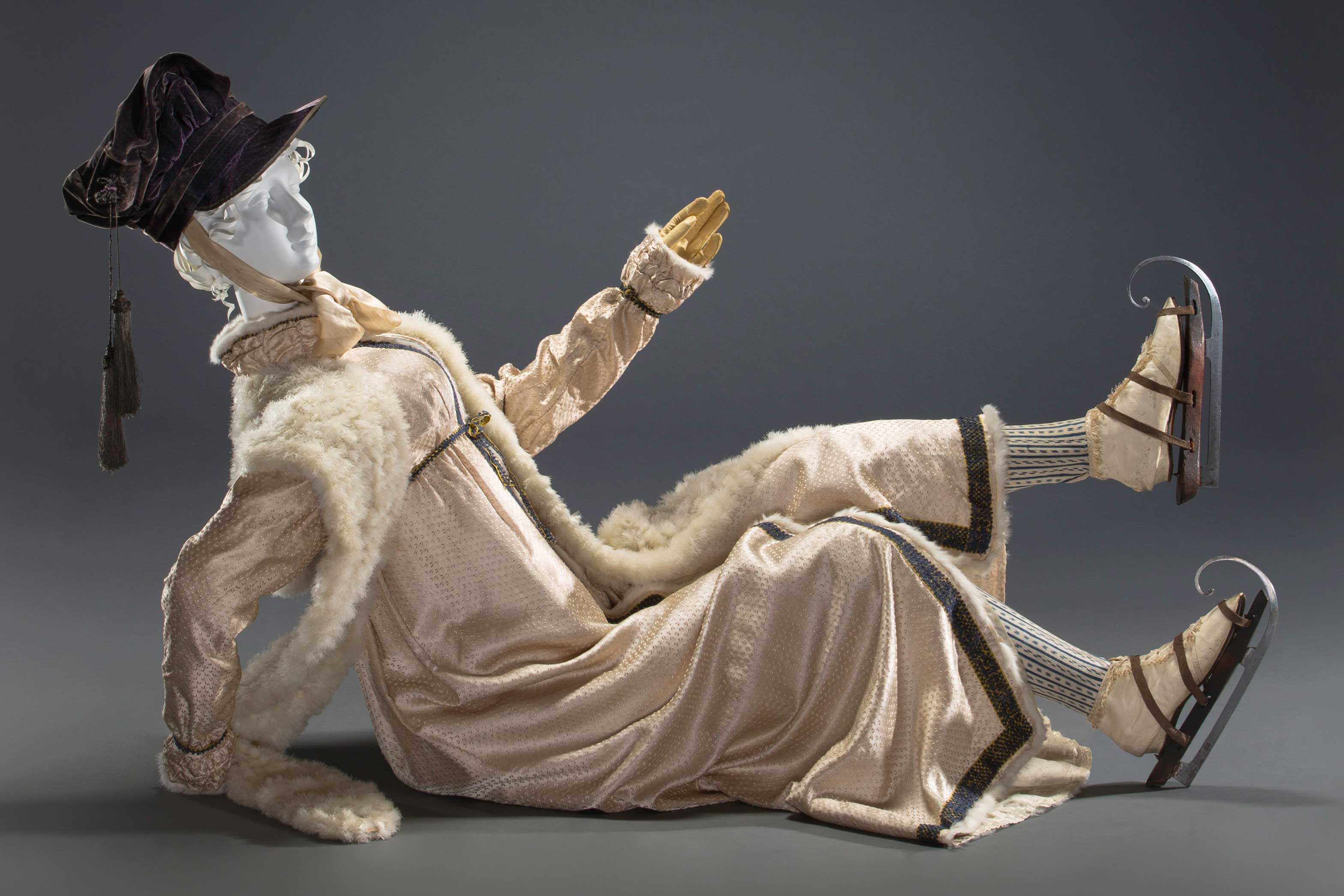
Riding ensemble, 1860s, Photo: Brian Davis, © FIDM Museum, Courtesy American Federation of Arts
Managing an abundance of material, whip in hand, atop a steed at full gallop, took practice. The sweep of this habit skirt measures a remarkable twelve and a half feet. However, the fabric’s weight was not enough to keep it from flipping backward while in motion, which would have revealed an embroidered petticoat and, possibly, the rider’s legs.
Five lead weights are attached at intervals around the underside of the skirt’s circumference, in keeping with a description in 1855 in Harper’s New Monthly Magazine that “the hem is loaded with small pellets, or with rolls of sheet-lead. This secures the falling of the drapery in graceful folds.”

Bathing ensemble, 1900s, Photo: Brian Davis, © FIDM Museum, Courtesy American Federation of Arts
The horizontal, vertical, and diagonal stripes of a cotton cap, silk stockings, and canvas boots added dynamism to this bathing ensemble, supplanting the anchor motif often depicted in fashion illustrations. Its collarless, short-sleeved design exposed the wearer to sunburn, however. In 1908, Harper’s Bazar warned that a price was paid for not carrying an umbrella: “There are girls who are so anxious to look pretty on the beach that they forget the woes of last autumn and the painstaking and discouragement that went to the removal of the summer’s coat of tan before they could decently appear in evening gowns.”

Tennis ensemble, 1920s, Photo: Brian Davis, © FIDM Museum, Courtesy American Federation of Arts
Competitive play on clay and grass courts, whether amateur or professional, was level so long as both opponents took advantage of the new uniform designs. According to Helen Wills—a number-one ranked player in the 1920s—“Tennis is so active that the player, running, jumping, turning, and twisting, must have as little as possible to hamper her action. . . . The ideal [skirt] length is at the centre of the knee-cap.”
This cotton tennis dress is exactly as Wills described. It mimicked fashionable streetwear, but for easier maneuverability was shorter than previously acceptable modes. And because of the newly abbreviated hemline, exposed legs lost their gartered stockings and, simultaneously, inspired the invention of ankle socks.

Motorcycling ensemble, 1930s, Photo: Brian Sanderson, © FIDM Museum, Courtesy American Federation of Arts
In 1908, Clara Wagner, the daughter of a motorcycle manufacturer from Saint Paul, Minnesota, became the first female rider issued a permit from the Federation of American Motorcyclists, established five years earlier as the first organized biker club.
Before World War II, female riders were not a target market for manufacturers, and most wore items derived from menswear and intended for other sports. Sturdy clothing like these leather riding pants, known as jodhpurs, and this protective kidney belt with blue, red, and yellow reflectors—an early form of hazard lighting—became a uniform for thrill-seekers who forged their own style pathways.


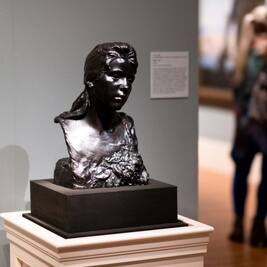
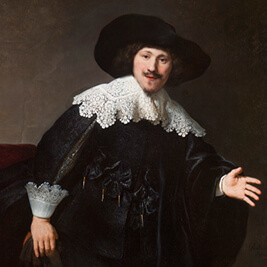
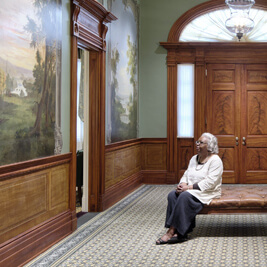

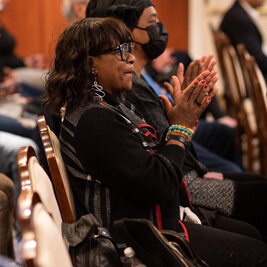
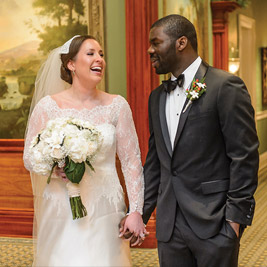

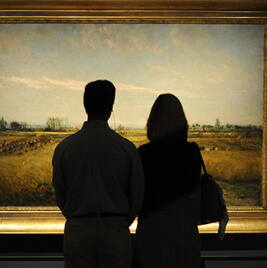


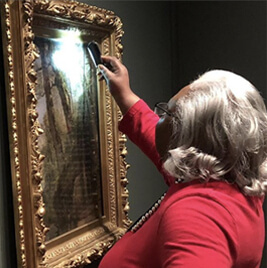
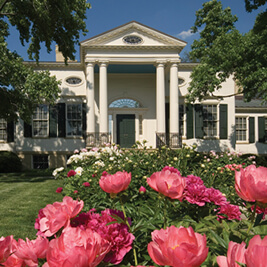



About the author
Taft Museum Staff
A staff member from Taft.